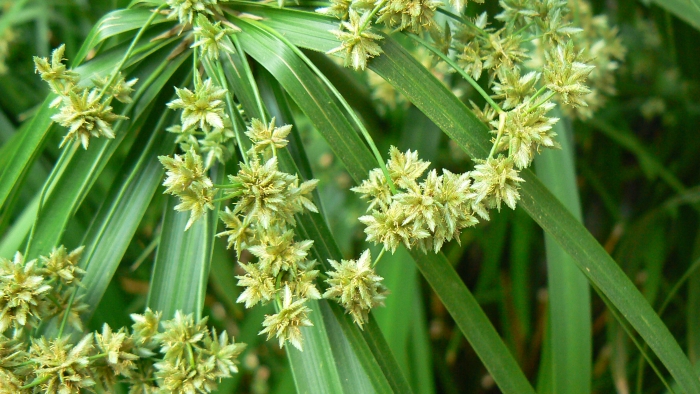Umbrella Sedge
(Cyperus alterniflorus)
Umbrella Sedge (Cyperus alterniflorus)
/
/

Dinesh Valke from Thane, India
CC BY-SA 2.0
Image By:
Dinesh Valke from Thane, India
Recorded By:
Copyright:
CC BY-SA 2.0
Copyright Notice:
Photo by: Dinesh Valke from Thane, India | License Type: CC BY-SA 2.0 | License URL: https://creativecommons.org/licenses/by-sa/2.0 | Uploader: Sreejithk2000 | Publisher: Wikimedia Commons | Title: Cyperus_alternifolius_(357195607).jpg | Notes: ''Cypripedium parviflorum'' Salisb. (1791)





Estimated Native Range
Summary
Cyperus alterniflorus, commonly known as umbrella sedge or umbrella papyrus, is a perennial, rhizomatous sedge native to Madagascar and the Arabian Peninsula, often found in wetlands and along the edges of ponds and streams. It typically grows to a height of 0.3 to 2 meters (1.0 to 6.6 ft) and is characterized by its grass-like clumps and distinctive radiating bracts that resemble the spokes of an umbrella. The plant produces small, yellow-green-brown flowers from June to October, which are modest in appearance but add texture to the foliage.
Umbrella sedge is valued for its unique form and is often used in water gardens, as a marginal aquatic plant, or in containers where its water needs can be easily met. It thrives in part shade to full sun, prefers consistently moist to wet soil, and can even grow in shallow standing water, making it ideal for pond edges and bog gardens. While it is not known for significant pest or disease issues, it can become invasive in some regions if not managed properly. In areas where it is not native, care should be taken to prevent its spread into natural waterways.CC BY-SA 4.0
Umbrella sedge is valued for its unique form and is often used in water gardens, as a marginal aquatic plant, or in containers where its water needs can be easily met. It thrives in part shade to full sun, prefers consistently moist to wet soil, and can even grow in shallow standing water, making it ideal for pond edges and bog gardens. While it is not known for significant pest or disease issues, it can become invasive in some regions if not managed properly. In areas where it is not native, care should be taken to prevent its spread into natural waterways.CC BY-SA 4.0
Plant Description
- Plant Type: Grass
- Height: 2-3 feet
- Width: 1-2 feet
- Growth Rate: Moderate
- Flower Color: N/A
- Flowering Season: Summer, Fall
- Leaf Retention: Deciduous
Growth Requirements
- Sun: Part Shade
- Water: High, Aquatic
- Drainage: Slow, Standing
Common Uses
Bank Stabilization, Potted Plant, Water Garden
Natural Habitat
Wetlands and pond/stream edges in Madagascar and the Arabian Peninsula
Other Names
Common Names:
Scientific Names: , Cyperus alterniflorus, Mariscus alterniflorus, Cyperus pictus,
GBIF Accepted Name: Cyperus alterniflorus R.Br.